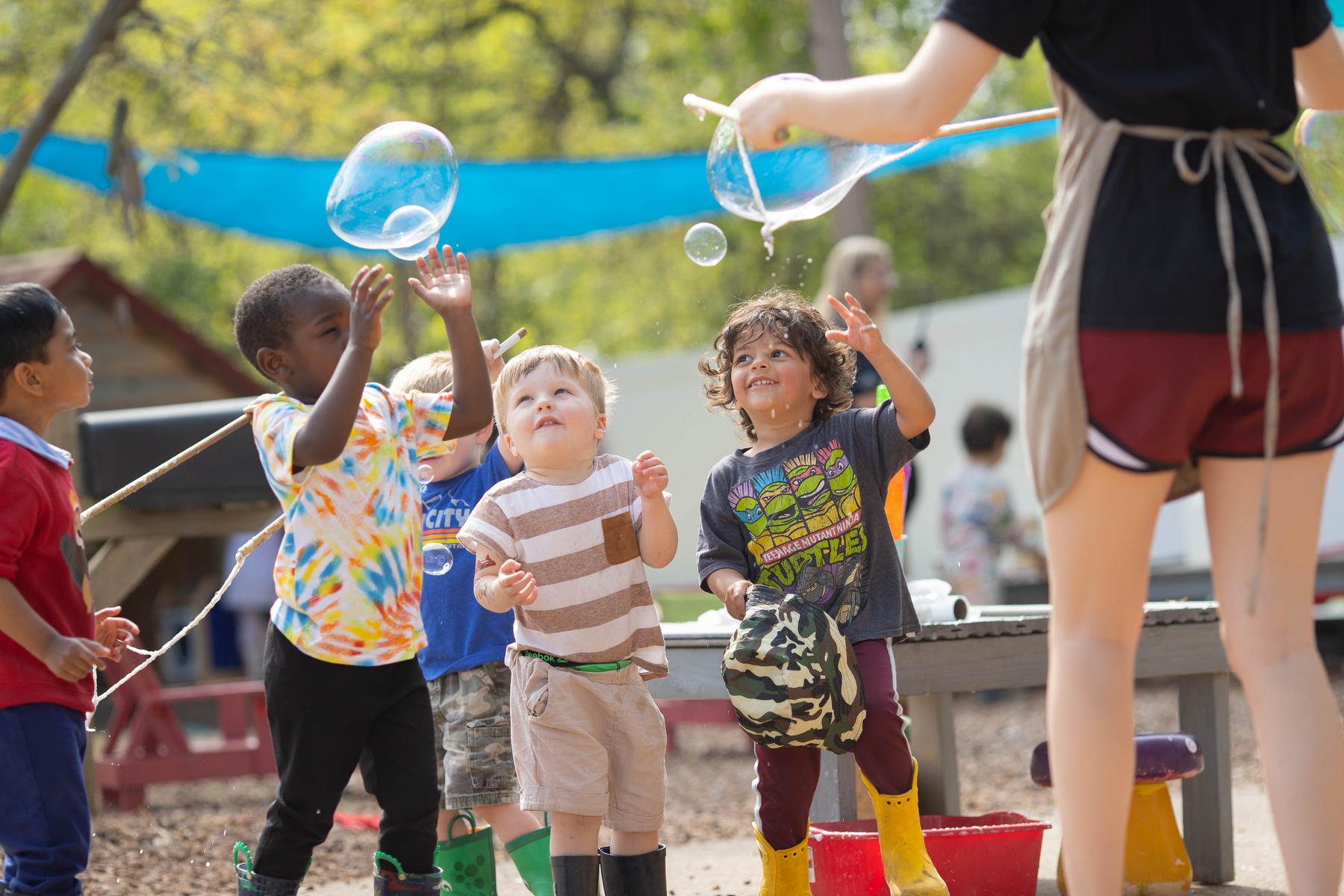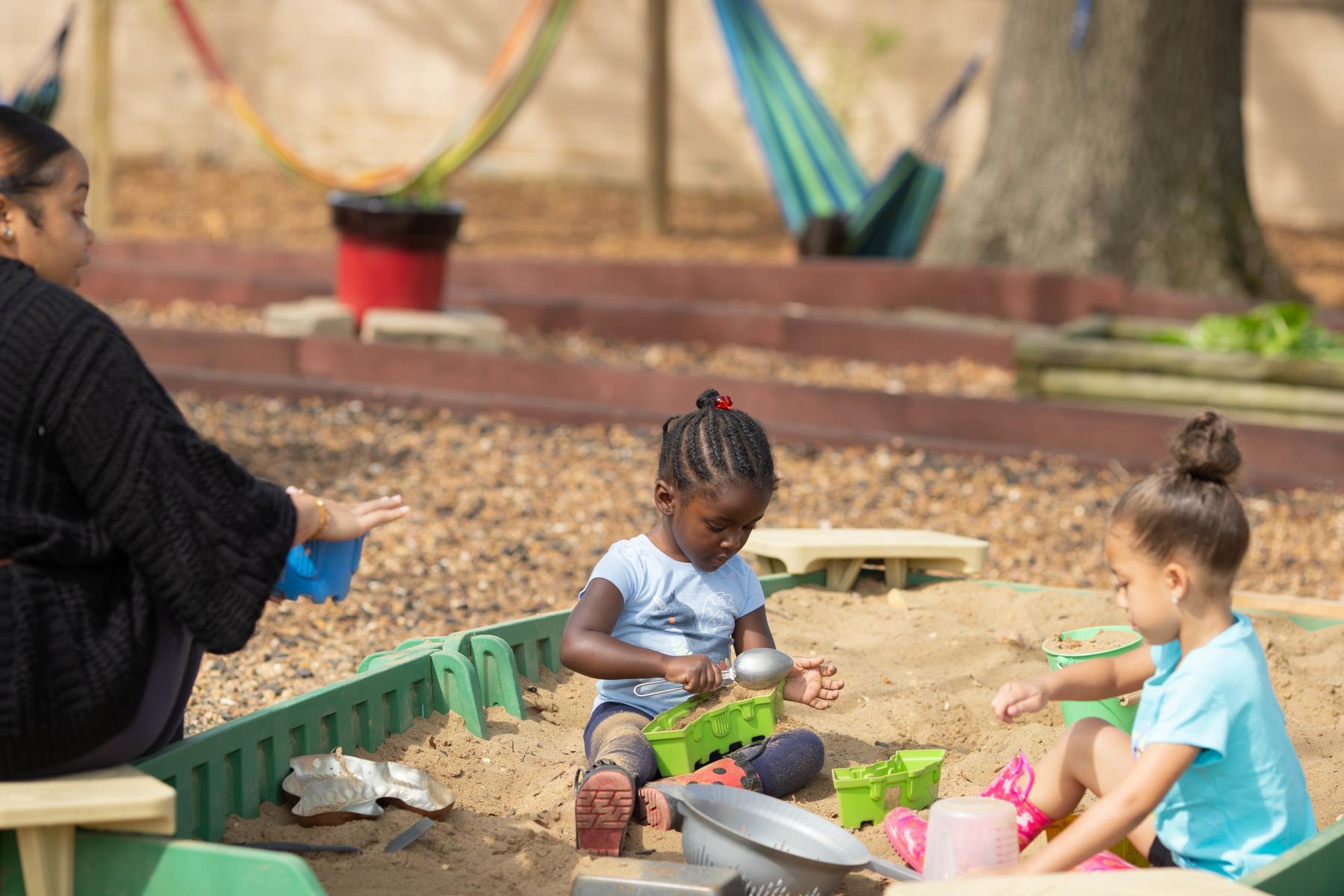Little Govs CLC named region's top campus children's center in national study
(Posted on Monday, May 1, 2023)
CLARKSVILLE, Tenn. - The Little Govs Child Learning Center at Austin Peay State University is being highlighted in a national study as the top campus children’s center in the region due to its expansive outdoor play space.
A research team from Texas Tech University (TTU) led by Dr. Lori Guerrero visited Austin Peay from April 13-14 to observe three play sessions at Little Govs CLC, as part of a larger study on how outdoor play settings can impact socioemotional development. Austin Peay was among five campuses chosen to participate, each representing a different part of the U.S.
“It was an excellent site to visit – not only was the outdoor learning environment incredible, but the teachers were passionate,” said Guerrero, an assistant professor with TTU’s Department of Design. “They had prepared the environment to allow the children to lead their play and learning based on their interests, and that was really neat to see.”
Claudia Rodriguez, the director of Little Govs CLC, said the center’s mission is for children to explore and learn through play.
“We have what’s called a Reggio-inspired environment, which is named after the city of Reggio Emilia in Italy,” she said. “It’s driven by providing children with environments that promote and support curiosity, exploration, hands-on play and getting dirty. Everything you see out there is something children can get messy with and discover, explore and experiment.”
Little Govs CLC’s outdoor play areas range from gardening and construction spaces to hammocks and mud painting stations. Guerrero said she chose Austin Peay for her study because every play setting she wanted to evaluate was represented.
“There’s very little research that links specific play settings outdoors with socioemotional development,” she said. “So I’m looking at three different types of play: solitary, parallel and cooperative play. I’m observing the children’s behavior to determine what type of play is happening more often at each setting, and if there are any design features that afford or promote that type of play.”
Guerrero said there is a national push to create outdoor learning environments for children, and she hopes her research will help educators through the design process.
“It’s really important to have hands-on materials and child-led opportunities for playing freely,” Rodriguez said. “That’s a powerful thing that positively impacts the development of young children. They learn how to socialize with one another, engage with different activities and respect each other. And as they explore these different environments they learn how to problem-solve.”
Over the course of the research trip, Guerrero and her team recorded the number of children participating in the different types of play within each environment, along with detailed notes on how they engaged with the items and play areas.
Once her analysis is published, Guerrero plans to apply for grant funding that would allow her to visit more childcare centers across the U.S. and measure the impact of climate, weather and available materials on outdoor play.
“Exposure to the outdoors is so essential for children, especially when they’re young,” she said. “We have a pretty large percentage of children – almost 30% of preschool age children – already categorized as obese or overweight in the U.S., so increasing that physical activity is definitely important. But what we’re learning is that it’s impacting other developmental domains as well, such as social, emotional and cognitive development.”
Rodriguez said more than 90% of a child’s brain development happens within their first five years of life, so a positive environment at Little Govs CLC could leave a lifelong impact. The facility is open to children ages 2-5, and it primarily serves Austin Peay students, staff and faculty.
“Anyone who’s interested can go to our website and get themselves on the waiting list,” Rodriguez said. “We encourage families to get on the waiting list as soon as they’re pregnant, or at least when they have their child, because right now our average wait time is three to four semesters.”
She said the center’s approach to teaching young children integrates outdoor play with academic learning, so graduates will leave fully prepared to start elementary school.
“The outdoor classroom is an extension of the indoor classroom, so everything that’s happening outside is also happening inside on a calmer level,” Rodriguez said. “We fully prepare them all the way up until they’re ready to go to kindergarten, and when they do they’ll have all the academic requirements they need. But the approach to teaching them is all done through play.”

